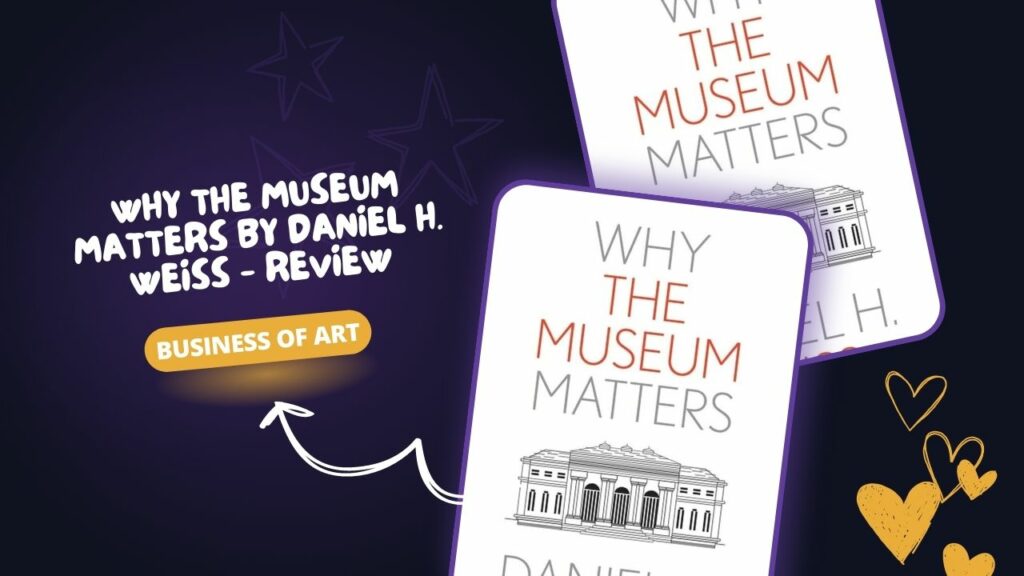eBook This – Why the Museum Matters? Museums have been a vital part of human civilization for thousands of years.
They serve as guardians of our cultural heritage, preserve our history and art, and inspire and educate the public.
In this article, we will explore the importance of museums in our society, according to Daniel H. Weiss, the President and CEO of the Metropolitan Museum of Art in New York City.
We will discuss the role of museums in preserving and interpreting art and culture, promoting diversity and inclusion, fostering civic engagement, and advancing innovation and creativity.
By the end of this article, you will understand why the museum matters and why it is essential to support and visit museums.
Preserving and Interpreting Art and Culture
Museums are the guardians of our cultural heritage, preserving and interpreting art and artifacts that embody the human experience.
According to Daniel H. Weiss, museums provide a sense of continuity and connection to the past, present, and future.
They allow us to appreciate the richness and diversity of human culture, learn from our shared history, and reflect on our values and beliefs.
Promoting Diversity and Inclusion
Museums play a crucial role in promoting diversity and inclusion in our society.
They offer a platform for underrepresented voices and perspectives, challenge stereotypes and prejudices, and create opportunities for dialogue and understanding.
According to Daniel H. Weiss, museums should strive to reflect the diversity of their communities and engage with diverse audiences.
They should also be inclusive and accessible to people of all backgrounds and abilities.
Fostering Civic Engagement
Museums are not only places of contemplation and reflection, but also hubs of civic engagement and public discourse.
According to Daniel H. Weiss, museums can be a catalyst for social change, promoting civic awareness, activism, and participation.
They can also collaborate with other institutions, organizations, and communities to address pressing issues and contribute to public policy.
Advancing Innovation and Creativity
Museums are also incubators of innovation and creativity, providing inspiration and resources for artists, designers, scientists, and entrepreneurs.
According to Daniel H. Weiss, museums can stimulate interdisciplinary collaboration, experimentation, and research, and inspire new ideas and approaches. T
hey can also foster the development of new technologies, materials, and techniques, and support the growth of the creative economy.
FAQs Why the Museum Matters
Why are museums important in preserving art and culture?
Museums are important in preserving art and culture because they provide a secure environment for the art and artifacts to be protected from damage or deterioration.
They also play a vital role in interpreting and contextualizing the art, providing historical, social, and cultural context that enhances our understanding and appreciation.
How do museums promote diversity and inclusion?
Museums promote diversity and inclusion by reflecting the diversity of their communities, engaging with diverse audiences, and offering programming and exhibitions that explore underrepresented voices and perspectives.
They also provide educational and outreach programs that target marginalized groups and address social issues.
What is the role of museums in fostering civic engagement?
The role of museums in fostering civic engagement is to create opportunities for dialogue, reflection, and action on social, cultural, and political issues.
Museums can collaborate with other institutions, organizations, and communities to address pressing issues and contribute to public policy.
They can also provide educational and outreach programs that empower visitors to become active citizens and make a positive impact in their communities.
For example, museums can organize public forums, town hall meetings, and workshops that bring together diverse stakeholders and encourage them to share their perspectives and ideas.
How do museums advance innovation and creativity?
Museums advance innovation and creativity by providing inspiration and resources for artists, designers, scientists, and entrepreneurs.
They can offer collections, archives, and libraries that provide a wealth of information and inspiration for new ideas and approaches.
They can also provide workshops, residencies, and fellowships that offer access to equipment, materials, and expertise, and support the development of new skills and techniques.
What can we do to support museums?
There are several ways to support museums, including visiting them, donating to them, volunteering for them, and advocating for them.
By visiting museums, we can appreciate their collections and exhibitions, learn from their educational programs, and contribute to their financial sustainability.
By donating to museums, we can support their mission and programs and ensure their long-term viability.
By volunteering for museums, we can contribute our skills and expertise and help them serve their communities.
And by advocating for museums, we can raise awareness of their importance and influence public policy and funding decisions.
About The Author of Why the Museum Matters
Daniel H. Weiss is an American cultural historian, museum administrator, and academic. He was born on June 16, 1957, in Roslyn, New York, and grew up in a family of educators and art enthusiasts.
Weiss received his undergraduate degree in history from George Washington University and his Ph.D. in art history from Johns Hopkins University.
After completing his studies, Weiss taught at several universities, including Johns Hopkins, Princeton, and Williams College.
He specialized in American art and architecture, with a focus on the intersection of art, politics, and society.
He also wrote several books and articles on these topics, including “The Houses of St. Augustine” and “Art and Crusade in the Age of Saint Louis.”
In 2015, Weiss became the President and CEO of the Metropolitan Museum of Art, one of the world’s largest and most prestigious art museums.
During his tenure, Weiss has focused on expanding the museum’s reach and relevance, enhancing its financial sustainability, and promoting diversity, equity, and inclusion.
He has also initiated several major exhibitions and programs, including the Met’s 150th anniversary celebration in 2020.
Weiss has received numerous awards and honors for his contributions to the arts and culture, including being named one of Time magazine’s “100 Most Influential People” in 2016.
He is also a member of several cultural and educational organizations, including the American Academy of Arts and Sciences and the National Council for the Humanities.
Pros and Cons of Why the Museum Matters by Daniel H. Weiss:
Pros Why the Museum Matters
- Provides a comprehensive overview of the importance of museums in our society, including their role in preserving cultural heritage, promoting diversity and inclusion, fostering civic engagement, and advancing innovation and creativity.
- Offers practical insights and recommendations for museum professionals, policymakers, and the public on how to support and enhance the mission and impact of museums.
- Features a compelling narrative and engaging writing style that appeals to a wide range of readers, from scholars and professionals to students and general audiences.
- Incorporates numerous examples and case studies from various types of museums and cultural institutions, providing a rich and diverse perspective on the topic.
- Offers a nuanced and balanced perspective on the challenges and opportunities facing museums today, including issues related to funding, sustainability, relevance, and social responsibility.
Cons Why the Museum Matters
- Some readers may find the book too general or superficial, lacking in-depth analysis or empirical evidence to support its claims.
- The book may be too focused on the perspective of museum professionals and experts, and less on the perspectives and needs of the general public and diverse communities.
- The book may not address some of the most pressing issues facing museums today, such as the impact of digital technologies, changing demographics and visitor expectations, and the role of museums in addressing social justice and environmental issues.
- The book may be too focused on the context and experiences of museums in the United States, and less on the global and comparative perspectives.
- Some readers may find the book too optimistic or idealistic, failing to acknowledge the limitations and contradictions of museums as institutions of power and representation.
Conclusion
In conclusion, museums are essential institutions that enrich our lives and contribute to our society’s well-being.
They serve as guardians of our cultural heritage, promote diversity and inclusion, foster civic engagement, and advance innovation and creativity.
However, museums face many challenges, such as funding, sustainability, and relevance.
Therefore, it is crucial to support and visit museums, advocate for their importance, and participate in their programs and activities.







